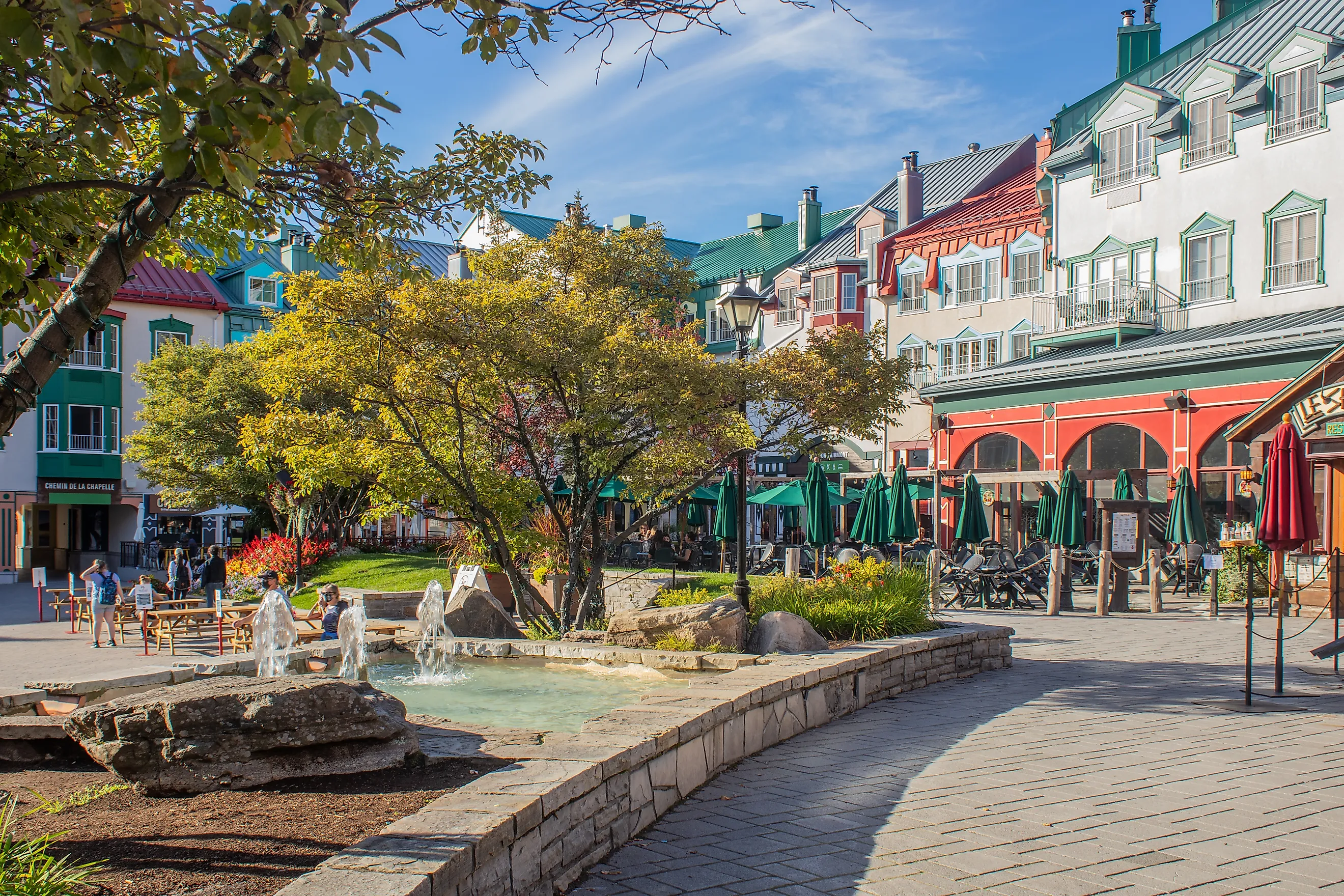
8 Stunning Small Towns In Quebec
From its Atlantic coastline to its seemingly endless expanses of forests and the fertile banks of the Saint Lawrence River, Quebec is jam-packed with beauty wherever you go. Outside of its bigger cities, like Montreal and Quebec City, this French-speaking province has tons of idyllic little towns to explore, many of which are gateways to some of the region's best parks, wildlands, and oldest historic districts. Today, let's delve into some of these stunning communities to give you a better idea of where to travel next if beautiful sights are important to you.
Baie-Saint-Paul

Located along the northern shore of the Saint Lawrence River, Baie-Saint-Paul is known for its concentration of local art galleries, historic homes, and proximity to Charlevoix Municipal County's outstanding natural features.
This town’s downtown core includes a collection of 19th-century buildings, many of which house mom-and-pop boutiques and restaurants focused on regional produce. Le Saint-Pub—Microbrasserie Charlevoix is a particularly popular joint, with its old-timey dining room and classic pub menu. In terms of the arts, the Baie-Saint-Paul Museum of Contemporary Art highlights the area's role in the early careers of many notable Quebec artists. Notably, Baie-Saint-Paul is also the original home of Cirque du Soleil, which began in the area during the early 1980s.
Outside the city center, you'll find access to hiking in scenic places like Grands-Jardins National Park and the nearby Route du Fleuve, a scenic drive through Charlevoix’s rolling riverside terrain. A seasonal ferry also connects the town to nearby L’Isle-aux-Coudres.
Magog
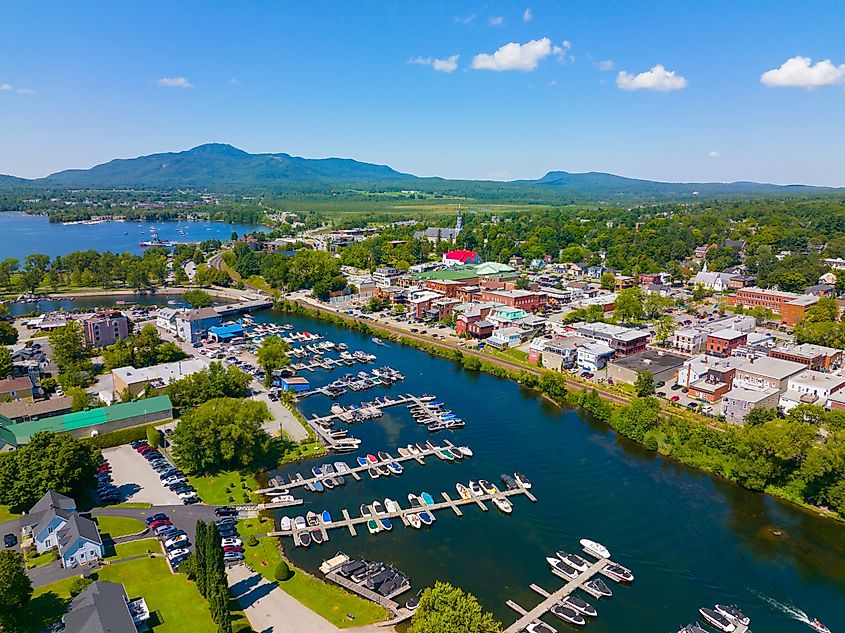
Magog sits at the northern end of Lake Memphremagog in Quebec’s Eastern Townships. Historically a mill town, it has transitioned into a tourism-driven community centered around the lake, nearby ski areas, and a revitalized main street. In town, Magog contains restored brick buildings, cafés, and local shops along Rue Principale, which leads toward the picturesque waterfront. The surrounding wildernesses offer a convenient escape into nature. The lakefront promenade and Parc de la Baie-de-Magog give access to beaches, bike paths, and public marinas. Furthermore, cruise boats operate seasonally on the lake, and local wineries and cideries can be found throughout the region.
But suppose you want a more remote outing. In that case, Mont-Orford National Park lies just northwest, boasting a network of hiking trails, cross-country skiing areas, and incredible views of the surrounding Appalachian terrain. On the other hand, the town’s industrial heritage is visible in some of its riverside structures, a lot of which were old textile mills, now repurposed for public use. In fact, the Magog Textile Mill National Historic Site of Canada is now a federally protected district that is a must-visit for those interested in the area's longstanding past.
Saint-Sauveur
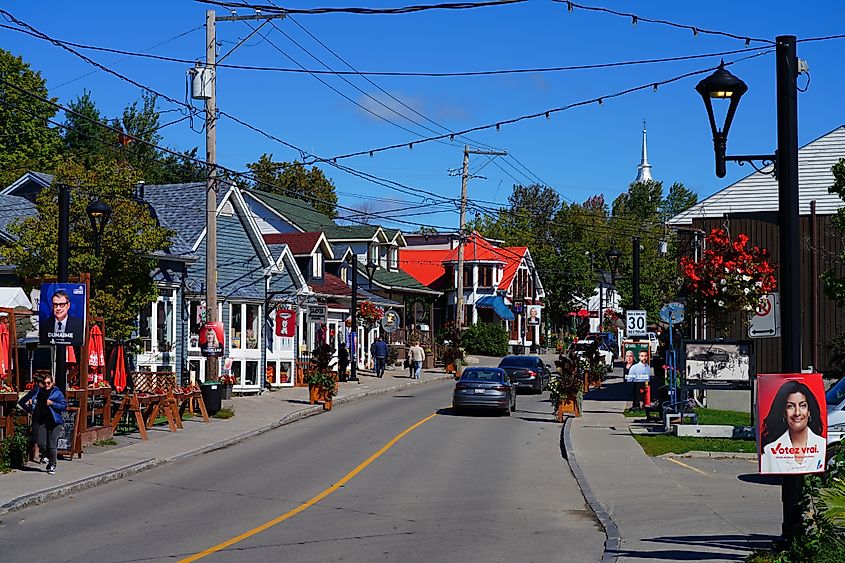
Saint-Sauveur is located in the renowned hills of the Laurentians, approximately 75 kilometers northwest of Montreal. It’s best known as a ski town, anchored by Sommet Saint-Sauveur, one of Quebec’s oldest and most active ski resorts. With that, the town has developed as a four-season destination, with hiking and cycling trails replacing ski runs in the warmer months. Saint-Sauveur's proximity to Montreal has also made it a popular weekend escape for city slickers. Every year, crowds of travellers support iconic cultural institutions like the Théâtre Saint-Sauveur and several small galleries that operate seasonally.
Rue Principale forms the commercial core of Saint-Sauveur, lined with all the amenities you can need while visiting, including lodging. The Hotel & Suites Les Laurentides is one of many affordable options, while the Le Petit Clocher Gîte Touristique B&B provides a truly upscale and memorable experience in a former monastery surrounded by a 100-year-old maple grove. The landscape around town consists of forested hills and small lakes typical of the southern Laurentians.
Mont-Tremblant
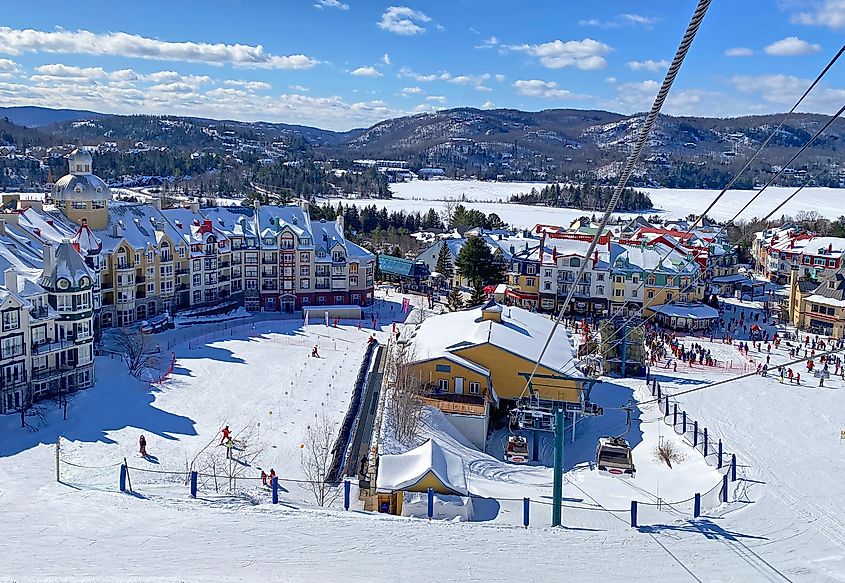
Mont-Tremblant is also located in the Laurentian Mountains and functions as both a town and a resort complex. The municipality includes several sectors, the most famous being the pedestrian village at the base of the Mont Tremblant ski area. This purpose-built village features a nice assortment of hotels, shops, and restaurants, all connected by cobblestone paths, gondolas, and lifts. The historic town center, originally called Saint-Jovite, offers a more traditional main street lined with local businesses and eateries, like the famed Restaurant le Vieux Four.
On the nature side, Mont-Tremblant National Park (Parc national du Mont-Tremblant) lies immediately northeast and boasts an extensive system of backcountry trails, canoe routes, and wildlife habitats. Year-round, the area draws visitors for alpine skiing, hiking, road cycling, and lake activities. Lac Tremblant provides additional outdoor opportunities, including beaches for swimming and marinas to launch boats.
L’Isle-aux-Coudres
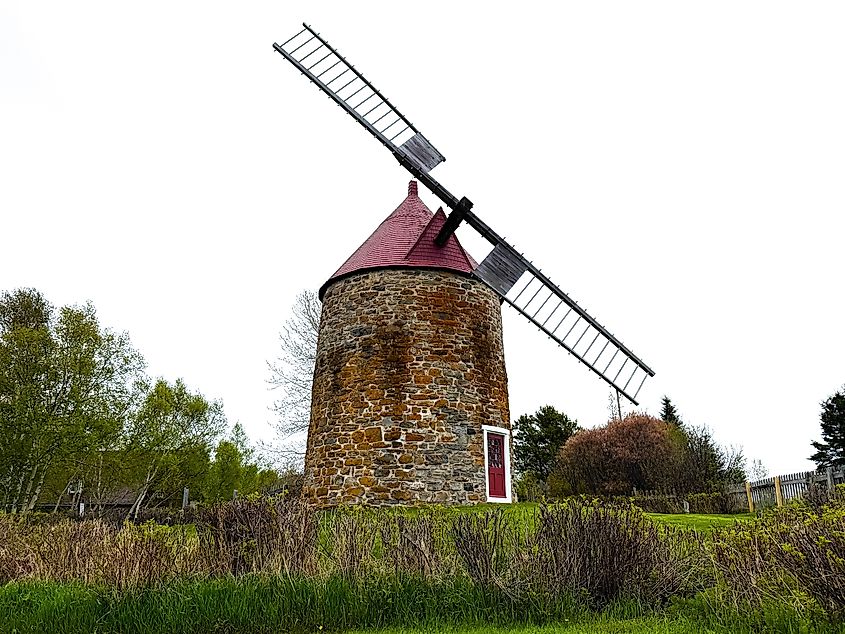
L’Isle-aux-Coudres is a small island located in the St. Lawrence River, accessible by ferry from Baie-Saint-Paul. First settled by Europeans in the late 1600s, the island's residents have since done an excellent job at preserving its agricultural roots, with a focus on orchards, cider production, and small-scale farming still making up the bulk of the economy. The island’s name refers to the hazel trees found by Jacques Cartier when he originally landed in 1535. Today, L’Isle-aux-Coudres remains one of Quebec’s more isolated and intact rural communities along the lower Saint Lawrence River, an essential stop on any road trip through the region.
A single road loops around the island, connecting a string of hamlets, churches, and heritage sites. For example, the Les Moulins de l'Isle-Aux-Coudres is a period-accurate windmill that you can see up close. Moreover, cyclists often use the island’s perimeter road, which offers river views and access to beaches and tidal flats. On the mainland, the Musée maritime de Charlevoix is a delightful museum that focuses on shipping, with several exhibits displaying real boats that once floated on the St. Lawrence.
Gaspé
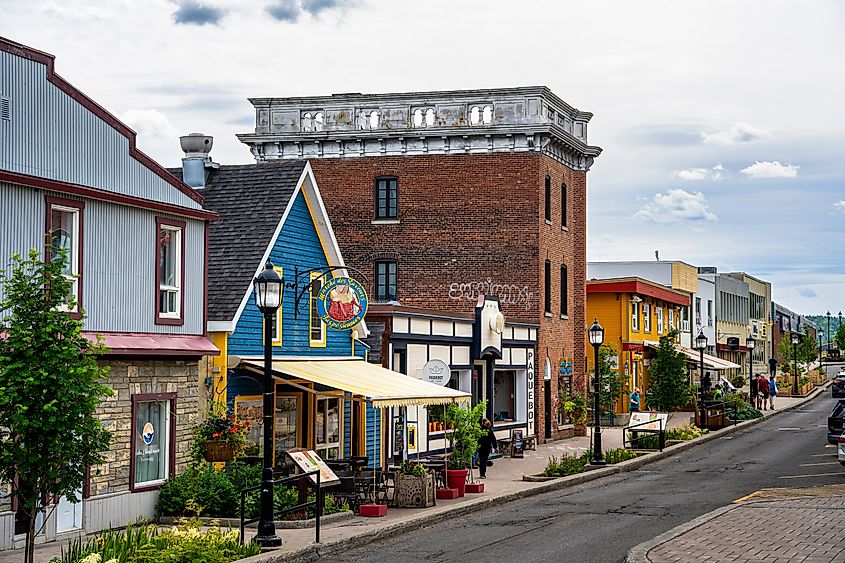
The town of Gaspé can be found in none other than the tip of the Gaspé Peninsula, a gorgeous area surrounded by sea cliffs, coves, and forests. It marks the easternmost urban settlement in Quebec, often referred to as the "Birthplace of Canada" due to Jacques Cartier's 1534 claim of the territory. In recent decades, the area has developed as a base for whale watching and coastal hiking. Although the fishing industry remains active, tourism now contributes significantly to the economy here.
Learn more about this distinctive region at the Musée de la Gaspésie, which outlines its storied maritime and colonial histories. Delve into the great outdoors here, too, at nearby Forillon National Park, which provides direct access to clifftop viewpoints, important wildlife habitats, and even some World War II-era military sites. A short route also connects the downtown to the sandy Haldimand Beach, along with several viewing platforms, just about ten km south. The town itself centers around Rue de la Reine, where government buildings and various businesses overlook Gaspé Bay. You'll also find some historic hotels if you are looking to spend the night, namely the Hôtel Plante and the cozy Auberge Sous les Arbres.
Val-David
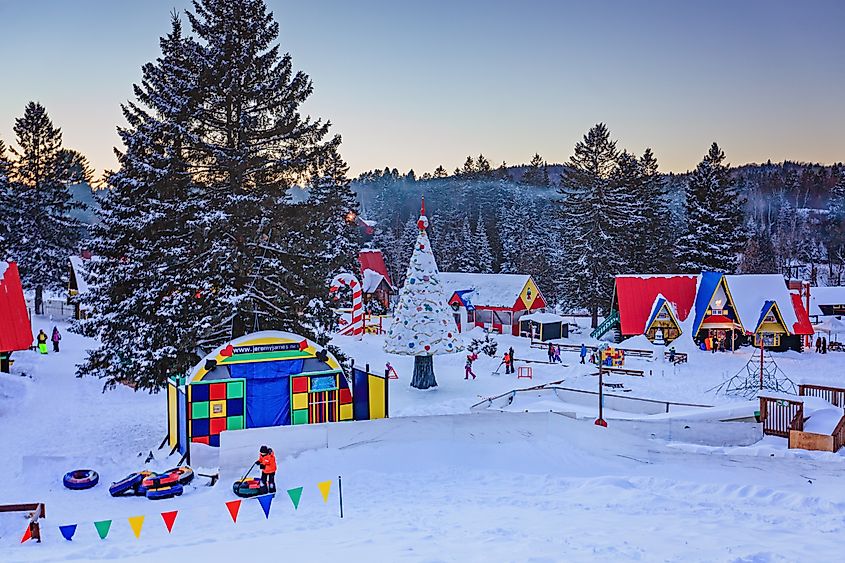
Another stunning destination located in the Laurentians, this time along the Rivière du Nord, Val David is one more gorgeous nearby getaway into nature for Montrealers. The landscape around it is heavily forested and full of rocky hills, with Val-David-Val-Morin Regional Park especially popular for its access to rock climbing, skiing, and hiking trails throughout the year. Interestingly, the park is a former rail corridor repurposed for recreation.
Public art installations and events like the 1001 Pots ceramics festival give the town a strong cultural identity that matches its outdoor focus. For an indoor experience, check out the Centre d'exposition de Val-David or the Gare de Val-David, the latter of which is more history-focused in its exhibits. A more family-oriented option for fun is the Village Du Père Noël Inc., a year-round Christmas-themed park boasting waterslides and other rides, a petting zoo, and seasonal activities in the winter.
Tadoussac
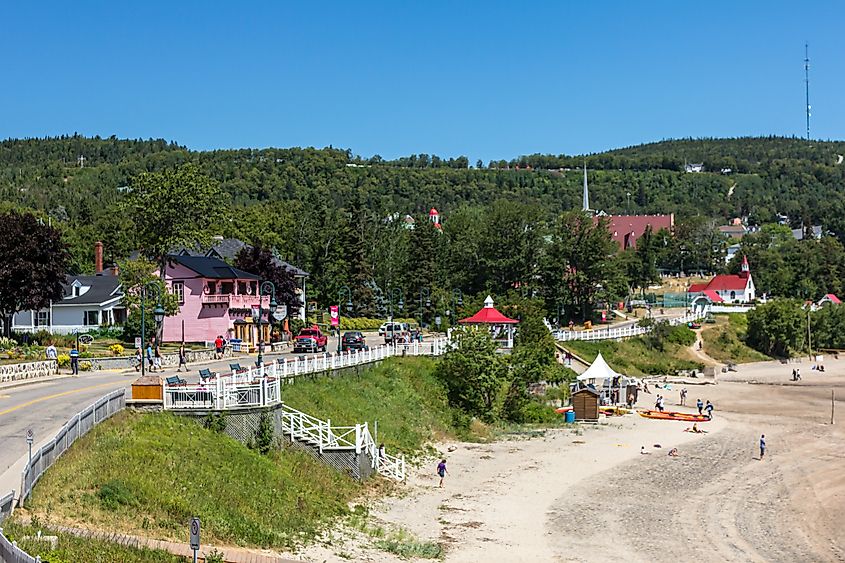
Seated where the Saguenay River meets the Saint Lawrence, forming a deep, sheltered bay, Tadoussac is known for its marine biodiversity and other water-based attractions. It also stands out as being one of the oldest continuously inhabited European settlements in Canada, founded in 1600 as a French trading post. With meticulously preserved buildings, like the Sainte-Croix-de-Tadoussac Mission Church dating back to 1747 (in fact, the oldest wooden church in North America), and other interpretive sites, such as the Chauvin Trading Post replica, this town is as much a draw for history buffs as it is for nature lovers.
Today, however, Tadoussac is a center for whale watching, thanks to its location near a marine confluence rich in krill. Beluga, minke, and humpback whales are commonly seen from shore or a boat. Learn more at the Marine Mammal Interpretation Centre, a fabulous destination that features science-based exhibits about the area’s ecological significance.
Experience These Wonderful Little Towns in Quebec Today
Whether you're looking to dive into Quebec's longstanding history or want to spend some quality time outdoors, this eastern province is a wonderland of beautiful destinations that can be explored year-round. With the recommendations above, you should have no issue finding places to stop off at during your next great Canadian road trip. From scenic coastal drives and vibrant art scenes to historic churches and national parks, Quebec’s small towns offer something special for every kind of traveler.











